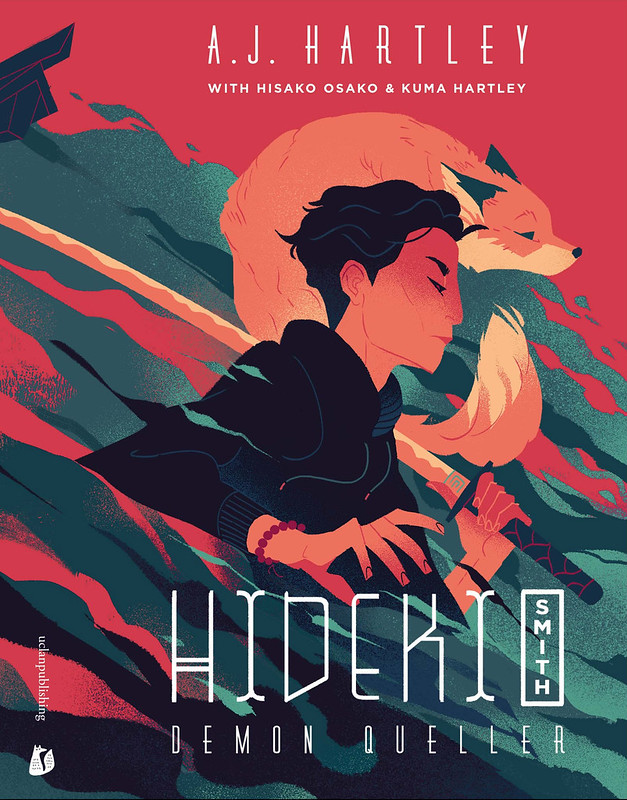
Shape-shifting creatures… in small-town North Carolina? There’s a reason they’re there, and as A.J. Hartley explains in this Big Idea for Hideki Smith, Demon Queller, there’s no better place for them to be.
A.J. HARTLEY:
Japanese folkore and mythology is packed with shape-shifting monsters. Seriously. Everywhere you look there’s something pretending to be something else. Some of them are funny (monsters disguised as umbrellas, anyone?). Some are terrifying. Some of them are just plain weird, acting according to a logic only they understand. But all of them reinforce a basic idea about the universe: that nothing is exactly as it appears.
It’s a familiar notion, of course, though it seems to have developed a deeper and more unsettling brand of truth as we wrestle with the implications of, on the one hand, quantum mechanics, and—on the other—a greater awareness of how race, gender and other matters create a disconnect between our we appear to others and how we see ourselves.
About those shape-shifters. My new novel, Hideki Smith, Demon Queller, is set in North Carolina but it’s informed by mystical beings from old Japan (generally called yōkai ) because the book’s protagonists are partly of Japanese heritage. I say partly because the title character (who goes by Caleb) has—like my own son—a Japanese-American mother and a Caucasian father. He and his sister have been raised to assimilate into a small town in which there are no other families like theirs, and they figure the best way to get through the pitfalls of high school is to fit in as best they can.
Except, of course, that they don’t look like they belong in their small mountain town, and changing that isn’t something they control. And their lives get more complicated when monsters start appearing in the woods, monsters whose origins are clearly—if mysteriously—connected to Caleb and Emily’s long-suppressed Japanese ancestry.
These aren’t just monsters of the scary teeth and claws variety, however. They are beings whose appearance can change, giving them a much wider selection of weapons. Many of the yōkai of Japanese legend are supernatural forms of common animals. There are racoon-dogs (tanuki) that can pretend to be teapots or sake barrels but can also appear as people. Sometimes they are tired, old folk who beg you to carry them or perform other tasks, for no reason other than their own amusement.
Tanuki are primarily tricksters, and not always competent ones at that, so they often give themselves away: hilarity, as the book jackets say, ensues. Mujina (a kind of badger) are more inclined to scare whoever they meet, appearing as ordinary people whose faces then vanish. In many versions of the story, the victim runs away, half mad with fear, and tells their tale of terror to the first cop, barman, or restauranteur they meet, only for their confidante to reply, “Was it like this?” Whereupon their face vanishes and the hapless victim blacks out in horror…
Heideki Smith, Demon Queller: Amazon|Barnes & Noble|Bookshop|Books-a-Million
Read the rest at: The Big Idea: A.J. Hartley











Recent Comments